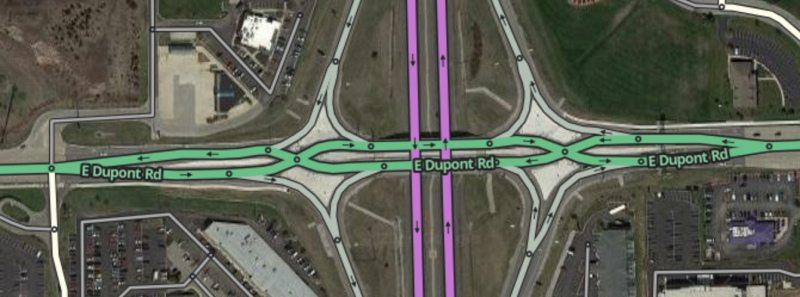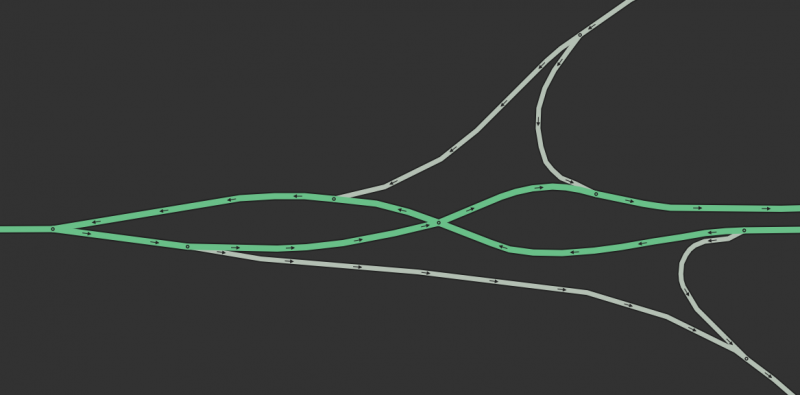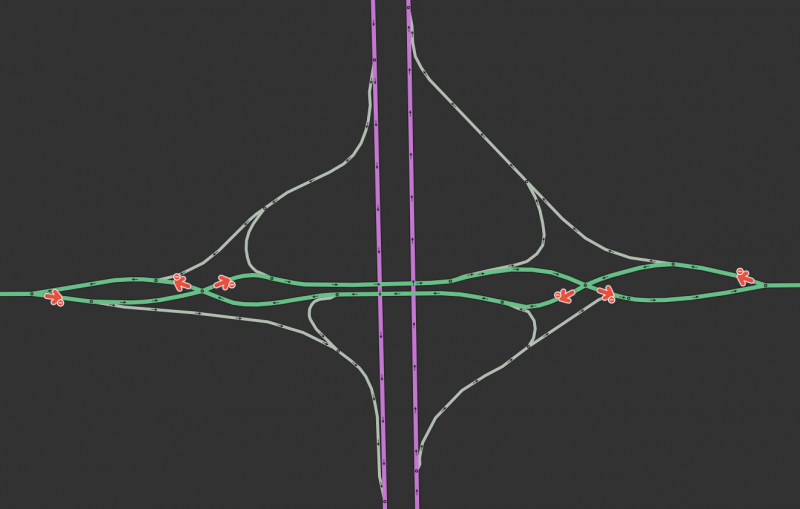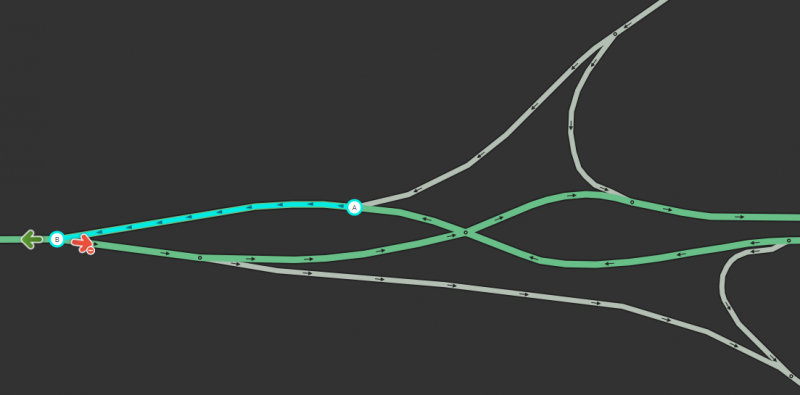Diverging Diamond Interchange (DDI)
See also: Diverging Diamond Interchange article on Wikipedia.
Diverging diamond interchanges (DDI) are a type of diamond interchange in which the two directions of traffic cross one another on each side of a limited-access roadway. A DDI may pass over or under the limited-access roadway.
This type of interchange is unusual, in that it requires traffic to briefly drive on the opposite side of the road from what is customary for the jurisdiction. However, the DDI's design controls the drivers line of sight to ensure the cross-over action feels natural and goes unnoticed.
Segment Directionality
All ramp and surface street segments are set as one-way.
At-Grade Intersections
Junctions
As with all at-grade intersections in Waze, all DDI at-grade intersections are modeled with junction points, including the two signaled intersections where opposing directions of traffic "cross over" each other.
Turn Restrictions
Overview
Exactly six turns are disabled in all Diverging Diamond Interchanges.
Outer Surface Road Intersections:
Disable the SINGLE turn from the one-way segment carrying traffic exiting the DDI to the one-way segment carrying traffic entering the DDI at both outer surface road intersections, for a total of two disabled turns.
Inner Surface Road Intersections:
Disable the TWO turns from one-way segments to the segments carrying traffic the opposite direction at both inner surface road intersections, for a total of four disabled turns.
Elevations
Elevations are set relative to the limited-access road passing over or under the DDI, with all segments that connect at at-grade intersections having identical elevation.





